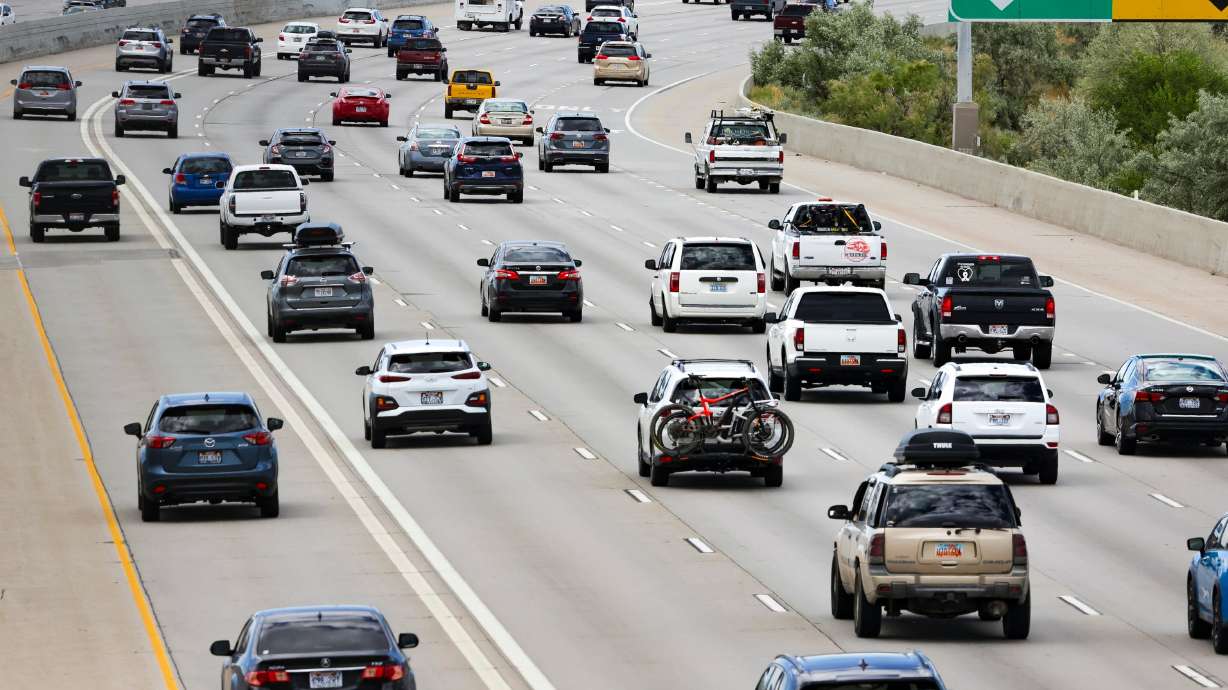Estimated read time: 3-4 minutes
This archived news story is available only for your personal, non-commercial use. Information in the story may be outdated or superseded by additional information. Reading or replaying the story in its archived form does not constitute a republication of the story.
SALT LAKE CITY — The U.S. Environmental Protection Agency unveiled new regulations Wednesday aimed at curbing tailpipe emissions in what officials acknowledge is a bold move to reduce harmful pollution by as much as 7.2 billion metric tons through the duration of the program.
Reaction, predictably, was wildly divergent over President Joe Biden's push for a green energy economy, which in this case targets nearly 70% of vehicles manufactured in the United States with a mandate they either be battery powered or a hybrid beginning in 2027.
"This rule will lead to cleaner cars that cost less to fuel, and people can be confident they'll continue to have a large number of choices that meet their individual needs. While the rule isn't as stringent as EPA's original proposal, there's real progress here to reduce emissions and help people save money," said Chris Harto, senior policy analyst for transportation and energy at Consumer Reports.
Harto also noted: "Over the past year, it's been debated whether the rule would be too strong or too weak, and whether consumers could see popular choices like pickup trucks and 3-row SUVs fade away. In the end, those concerns were unwarranted. These are practical standards that will eventually result in more vehicle choices that can save people a lot of money, because they use less gas, or no gas at all. Plus, these standards will reduce the emissions that lead to extreme weather, and the air pollution that can harm human health."
Senior administration officials have emphasized that manufacturers will have multiple pathways to compliance using a combination of battery electric vehicles, plug-in hybrids, strong hybrids and improved internal combustion engines.
But industry had this to retort:
"At a time when millions of Americans are struggling with high costs and inflation, the Biden administration has finalized a regulation that will unequivocally eliminate most new gas cars and traditional hybrids from the U.S. market in less than a decade. As much as the President and EPA claim to have 'eased' their approach, nothing could be further from the truth. This regulation will make new gas-powered vehicles unavailable or prohibitively expensive for most Americans. For them, this wildly unpopular policy is going to feel and function like a ban."
The statement was released by American Petroleum Institute President and CEO Mike Sommers and American Fuel and Petrochemical Manufacturers President and CEO Chet Thompson, who pointed to these details:
- Last year, gas cars accounted for 92% of U.S. vehicle sales (per Cox Automotive, while less than 8% were electric). More than a third of EV sales occurred in California. Nine of the top 10 vehicles sold last year were gas models, with pickup trucks and SUVs leading sales.
- EPA's light duty vehicle regulation covers passenger cars and trucks, model years 2027-2032. By 2032, the regulation will require cars and trucks sold in the United States to meet a fleet-wide average tailpipe emissions standard of 82 grams per mile.
- This standard is designed to force electric vehicle adoption and have EVs account for the majority of new car sales by 2030.
- Today, only EVs and five plug-in hybrid (PHEV) models meet the 82-grams-per-mile threshold, according to fueleconomy.gov. No gas, diesel or traditional hybrids come close.
Still, advocacy group Public Citizen said the rule does not go far enough.
"Under the EPA's updated clean car standards, more vehicle pollution will be avoided and more lives saved than would have been under current regulations. That is important to celebrate. But this rule falls far short of what is needed to protect public health and our planet. EPA is giving automakers a pass to continue producing polluting vehicles. We are in a crisis, and clean vehicle technology that will help solve it is here and available now," said senior policy advocate Chelsea Hodgkins.
Hodgkins emphasized that Biden had a chance to show stronger climate leadership and failed.
Critics, however, are promising a lawsuit, asserting the EPA has overstepped its regulatory authority.










